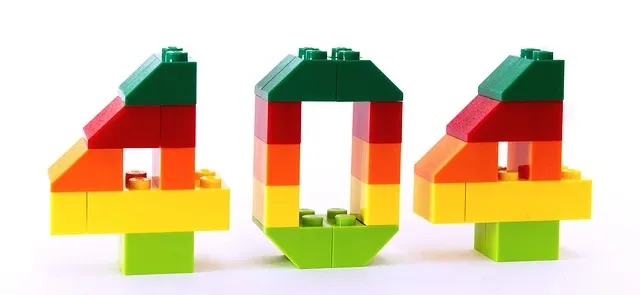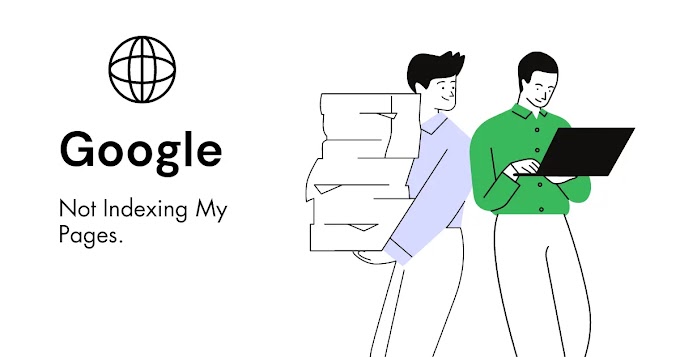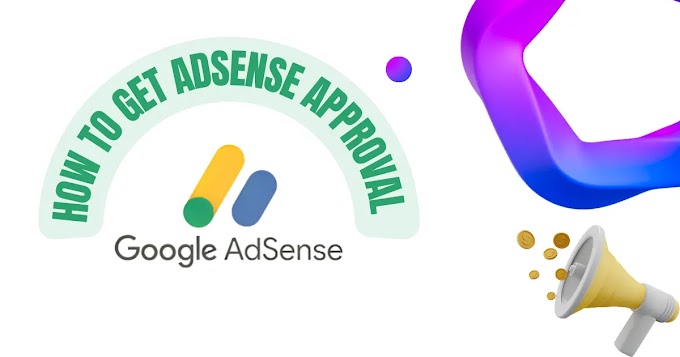I'm sure you'll learn how to get adsense approval by following what I'm going to show you here. I'm going to list exactly everything I've tried and tested to get blogs approved for the Google AdSense Partner Program.
This is a simple task, but I realize every day that many people cannot achieve this achievement at all.

In this article, I will explain the 16 items on the list in detail. The goal is to make you understand once and for all how to get approved for Google AdSense and start making money with it.
Pay attention to all the tips and details on this list, as any of them could be the reason for your blog's disapproval in the Google program.
Here we go?
List Of Items On How To Get AdSense Approval:
This list is just a collection of unproven but very real theories studied over many years. Furthermore, Google is not very clear about the real points that imply a disapproval.
1. Broken Links On The Website
Sometimes your website has some links, whether internal or external, that are broken. That is, they don't lead anywhere. Broken internal links generate Error 404 – Page not Found, which is terrible for the user experience.
Solve this problem with a plugin called Broken Link Checker. This plugin scans your website for broken links and provides replacement options directly without having to access the content.
2. Affiliate Links
Many question whether this is really a valid point. I already approved a blog with this condition, but it was an older site.
Sometimes it's not even the sale of products itself, but the website you're sending your reader through that may have misleading information or something like that.
The solution is simple: remove all links that lead to sales. After approval, relocate them all again.
3. Links to Skeptical Websites and Overstated Claims
Sometimes you recommend a partner or even an external website to gain SEO scores, but such websites may have aggressive and/or biased advertisements that generate distrust and affect your blog.
To solve this issue, it's quite simple: access all the external links on your blog and check each one of them to see if they are pointing to such websites, and remove them.
Whenever you link to an external website, make sure to check first to avoid recurrences.
4. Titles with Exaggerated and/or Biased Promises
This one is pretty obvious, but to get clicks, bloggers often resort to clickbait or exaggerate their titles with biased phrases or promises that aren't realistic.
For example, consider: 'Lose 5 kilos in a week.' Understand that while this may not be an outright lie, it is a significant exaggeration, and the content often provides little more than exercise tips or attempts to sell something.
If this is the case for your content, review your titles and aim for simplicity, ensuring they accurately reflect the content being covered.
For instance, consider a title like: 'How to Achieve Weight Loss through Consistent Diet and Exercise.' It conveys the same idea as the previous title but in a realistic and non-sensationalist manner.
5. Misuse Of Images
Google likes images that are clear and have content that represents the text of the article or section of content itself. Blurred images or images illustrating sensuality, terror, or even tending towards this can be a problem.
To solve it, it's very simple: analyze all the posts that contain images and create a standard size. Generally, 1200×630 is excellent and sufficient. Also, note whether they are images that connote the idea of the content or section of the content.
Also, avoid downloading images directly from Google; they may contain copyright, and this is a violation of publisher guidelines. To do this, use free image sources like Pixabay.com, Pexels.com etc.
6. Low-Value Content
Many blogs, to inflate content, generate mass articles via Artificial Intelligence without worrying about their quality. However, having AI-generated content is not prohibited, but it must be of high quality—dense and with a human touch.
Others are even worse; they do not use AI but blindly copy third-party content and, as a result, also fall into the fine mesh of the Google robot.
The solution is simple: use AI as a writing basis, not as a complete content generator. With this approach, you add richness to the article because it has a human touch. Also, remove redundancies and vain repetitions that AI tends to use.
Give your best to the content and try hard. Your content should help solve a problem or entertain the reader.
In Google's eyes, quality content means SEO optimized. If you're new to this term, I recommend reading about it. Thank me later!
7. Use Of Controversial And Sensitive Content
In addition to everything we've already said, some want to create news blogs and so far have encountered no problems. However, the problem begins when the writer inserts controversial and sensitive content with opinions, which can cause problems.
8. Use Of Prohibited Content
In addition to sensitive content, as we saw previously, there are also those that are strictly prohibited.
Google has its own policies, as well as publishers' policies, which must be strictly followed.
There is a lot of prohibited content; there is no way to list them all here, but you can access Google's publisher policies to stay up to date.
9. Lack Of Mandatory Pages
There are some pages that are mandatory on the blog, in addition to some crucial information that must be contained there.
Below is a list of them:
• Contact Us
• About Us
• Privacy and Cookies Policies
• Terms and Conditions
• Disclaimer
To resolve this, create all these pages and add the appropriate content to them.
Google values the legitimacy of content, and it is important to know who is behind it; this is resolved on the About page.
It is necessary to clearly provide access so that readers can get in touch, whether to complain, propose partnerships, or even remove data.
It is necessary to clearly expose the privacy and cookie policies with a link to access the removal of private data. Another issue is that you must leave a link to Google's own policies in the privacy policies, informing the capture of cookies.
The terms and conditions must make it clear what the role of the blog is and who uses it, and if the reader does not agree with them, they must leave the site.
Furthermore, it is also necessary to leave a specific menu for these pages in an accessible place with good visibility.
10. Lack Of Menus And Bad Navigation
Navigating a website fluidly is extremely important for a good user experience. Besides, Google loves it when the website provides a good user experience.
The lack of menus and various links exposing all areas of the blog, as well as the content, will leave your website inaccessible, especially on mobile devices.
11. Not Optimizing For Mobile (Mobile Devices)
Since we mentioned navigation in the previous item, now let's talk about usability and optimization for mobile devices.
Depending on your audience/niche, your blog can receive up to 95% of visits via mobile devices. Furthermore, having a mobile-optimized blog is a must these days, regardless of whether or not it will monetize.
Google will always prioritize a good user experience, and a website that is not suitable for mobile will not provide this satisfactorily. However, it is important to mention that it is optimized for mobile devices not only in appearance but also in its loading; we will see that below.
12. High Loading Time
Sites that load under 2.5 seconds are considered good for Google. However, slow websites make the user experience lag.
Thinking about how to get approved on Google AdSense, it is necessary to optimize your blog as much as possible. With this, in addition to a good experience, you will get satisfactory results as a whole and definitive approval.
To resolve this, several actions are necessary to make a website fast:
• Use fast website hosting
• A WordPress theme with well-optimized codes
• Images with adequate sizes as well as compressed (try WebP Format)
• Cache usage
• Compression of CSS, JS, and HTML codes
And many other actions that — if listed here — would result in a new article.
13. Link Camouflagers And Cloaking
Some blogs practice link cloaking to redirect to a specific website without displaying the real URL. However, this is terrible for both the site's performance and for approval in the Google Partner Program.
Even worse is the practice of cloaking, which aims to display one content for search engines and a different one for the user, essentially tricking the system. You can't fool google.
14. Little Content
I was reluctant to post this tip, but even today, people create 2 or even 10 articles and request approval. However, they are disapproved obviously because there is not enough content to be interesting for both Google and advertisers.
I'm showing you how to get adsense approval, and this is a very important point: having at least a minimal quantity of content.
I believe that you should not request approval without having at least 20-30 good articles.
15. Frequency Of Posting
If you create a blog, post 50 articles in a week and don't post for the rest of the month, it opens a window of distrust for Google.
Furthermore, it may imply that the content was created in mass solely to be approved in the Google AdSense Partner Program, without worrying about creating something really useful or interesting to inform or entertain readers.
Google may think that you have no intention of continuing to feed the blog, and that would be bad for everyone involved in monetization.
16. Blog Without Traffic
Imagine advertising on a website that no one accesses? That doesn't look good, right? That's exactly what Google and advertisers think—everyone wants results, including the blog in question, but without traffic, it's impossible.
However, to resolve this issue, you must generate traffic and you do not necessarily need to pay for it. There are several ways to generate traffic to a blog, but there are two that are the best considering approval for Google AdSense: Social Networks and search results.
Create a page on Facebook and Instagram and create content on them, always pointing to your blog. Also, do good SEO on your content to get traffic via search engines.
I Taught You How To Get AdSense Approval. Now It's Up To You.
This is the list of items to pay attention to on how to get approved for Google AdSense and start earning your first dollars.









